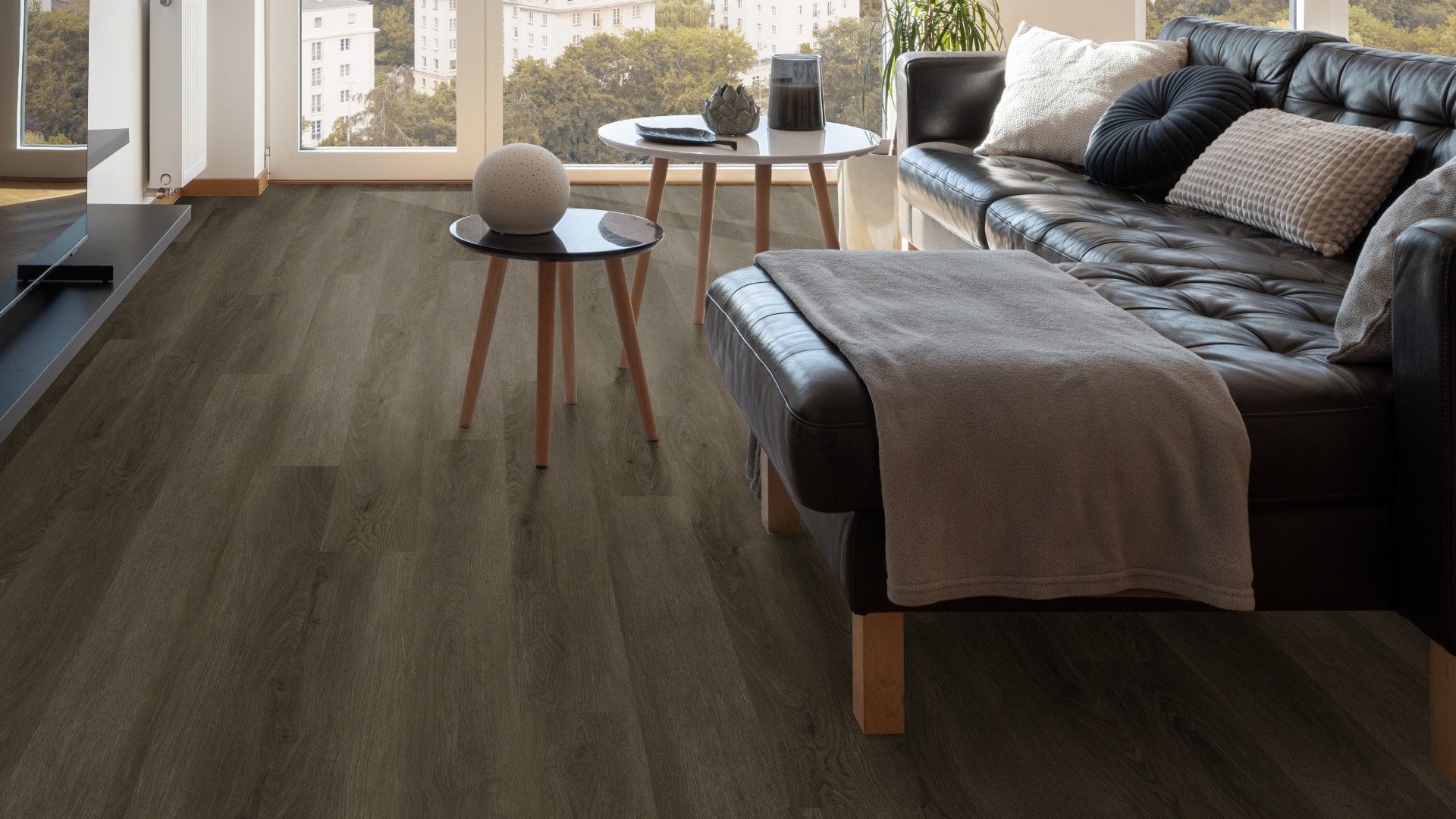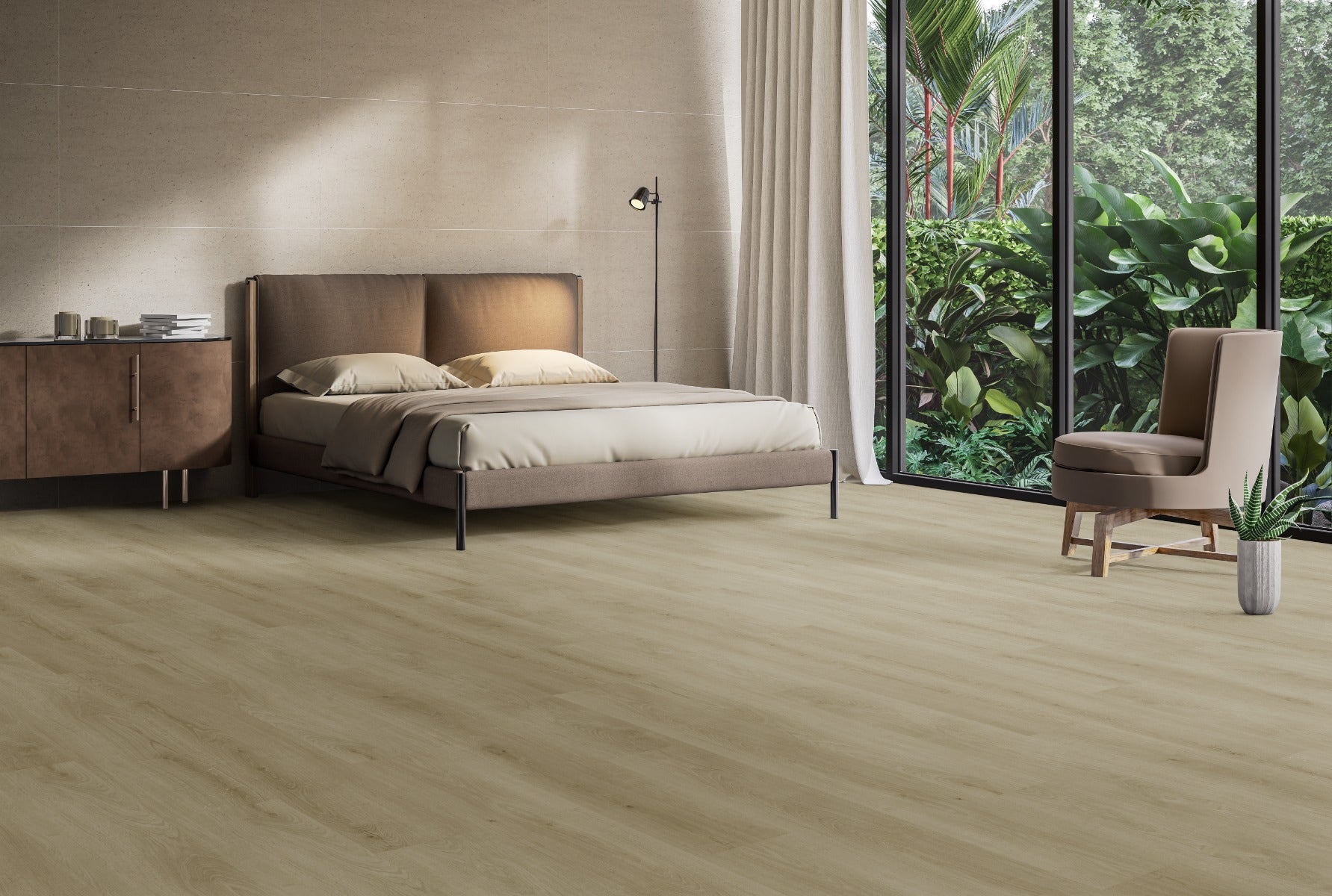Inspiration,
Articles,
Design tips
How Thick is LVP Flooring: Your Ultimate Guide to Luxury Vinyl Plank
11.04.24
Browse any LVP flooring selection, and you'll see different thicknesses. The natural question is: Does it really matter how thick my LVP floors are? Turns out it does!
Choosing the right thickness is important so your floors look beautiful and perform well for years to come.
Luxury Vinyl Planks (LVPs) are gaining popularity because of their durability, water resistance, and realistic wood look.
Understanding flooring thickness goes beyond just a number. It affects how well your LVP holds up against foot traffic, furniture, scratches, and dents.
Thickness also influences how long your floors will last before needing replacement, along with the underfoot feel, sound insulation, and warmth.
So, if you're ready to know the secrets behind choosing the right LVP flooring, stay tuned as we discuss standard thickness ranges, the importance of the wear layer, how thickness impacts stability and comfort, and how to choose the right option!

The Importance of Thickness in LVP Flooring
LVP thickness acts as a shield for your beautiful floors. Think of it this way: every step, every dropped object, and every furniture scoot puts a little stress on your flooring.
Thicker LVPs offer a greater buffer, better protecting the core layers and decorative surface from damage like scratches, dents, and fading.
This translates directly to the lifespan and overall value you'll get from your investment. With thicker floors, you're less likely to notice wear and tear as quickly, and they won't need replacement for a longer time.
Thinner LVP may seem tempting due to its lower up-front cost, but it could require replacing sooner than expected.
Standard Thickness Ranges for LVP Flooring
You'll usually find LVP flooring in the following thickness ranges (in millimeters):
- 2mm - 5mm: Entry-level, usually best for light traffic areas.
- 5mm - 8mm: Mid-range, great for most residential uses.
- 8mm +: Premium, often used in commercial settings with heavy foot traffic.
The Role of the Wear Layer
The wear layer is a clear top layer that protects the LVP floor from everyday wear like foot traffic, pet claws, dropped items, and furniture movement.
The thicker this wear layer, the more resistant your floors will be to scratches, scuffs, and fading.
The thickness of the wear layer matters more than the overall thickness of the plank. While a thick LVP plank can offer stability, a thick wear layer is the key to keeping your floor looking its best.
When comparing LVP options, pay close attention to the wear layer specifications.
Thickness vs. Stability and Comfort
Thickness doesn't just affect the stability of the LVPs; it also contributes to how enjoyable they are to live with, here's why:
- Comfort: Thicker LVPs often feel slightly cushier underfoot compared to thinner options, which can feel very hard. They also offer better sound insulation, helping to reduce the noise of foot traffic and creating a quieter space. This is helpful for multi-story homes or apartments.
- Stability: Thicker LVPs tend to feel more solid and stable, especially those with rigid cores (RCC). They are less likely to develop indentations from heavy furniture or appliances. Thicker LVPs also help hide small imperfections in your subfloor, reducing unevenness you might feel through thinner planks.
Choosing the Right Thickness for Your Needs
Here's a quick guide:
Location: High-traffic areas like kitchens, hallways, and entryways get the most wear and tear. For these spaces, invest in thicker planks and wear layers to get the most longevity.
Traffic level: If your household is a whirlwind of activity (kids, pets, frequent guests), thicker LVP will handle the daily demands well. Thinner options may be ok for quieter spaces like bedrooms.
Subfloor: A thicker LVP plank can better mask minor imperfections in your subfloor (slight dips, uneven spots). If your subfloor is in great condition, you may have more flexibility with thinner LVP.
Budget: Generally, thicker LVP flooring comes with a higher price tag. Factor this into your overall budget. Remember that while a thinner option might save initially, it might lead to earlier replacement, negating those upfront savings.

Step Up Your Flooring Game: Connect With Amber’s Experts for Tailored Advice!
Do you have more questions about how thick is LVP flooring and what's right for your project?
That's where the Amber team comes in! We know flooring and are here to help you find the right LVP thickness and the perfect style to match it.
Visit your local Amber showroom for a hands-on experience. Need help narrowing it down? Book a free design consultation and let our team guide you to the perfect LVP solution.
We're also happy to answer any questions—simply complete the online form!
FAQs About How Thick Is LVP Flooring
What Is the Average Thickness of LVP Flooring?
The average thickness of LVP flooring typically falls from 4mm to 8mm.
However, you'll find some thinner options (2mm to 4mm) suitable for light traffic areas and premium LVPs (8mm+) for heavy commercial use.
Remember, the wear layer thickness is even more important than overall plank thickness when it comes to durability.
How Thick Is 20Mil LVP Flooring?
20mil refers to the thickness of the wear layer, not the overall plank thickness. To convert mils to millimetres (mm), you can use a rough factor of 0.0254mm for every mil.
So, a 20 mil wear layer would be approximately 0.5mm thick.
Is LVP Thinner Than Laminate?
LVP and laminate flooring can have similar thickness ranges. Some LVP options might be slightly thinner than certain laminate floors, and vice versa.
The specific thickness will depend on the product line and its wear layer construction.

